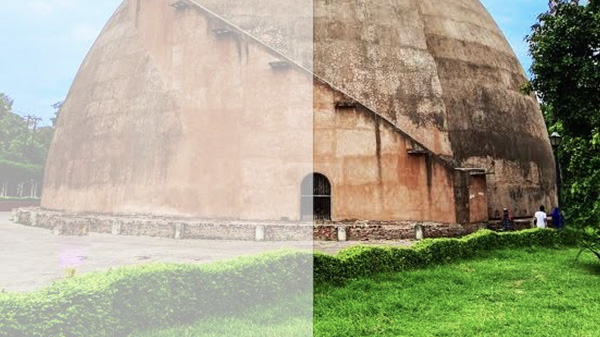Local Air Quality Management Plan (LAMP) for Indian cities

India is dealing with multiple environmental issues, with the most pressing of them all being air pollution. The issue of air pollution is not just limited to degrading the health of Indian citizens and the economy, but it also poses dangers to cultural heritages. It has been scientifically proven that continuous exposure to air pollutants both gaseous and particulate matter have damaged the historical monuments in India and across the world. To save these national treasures first step is to study and analyze the ambient concentrations of pollutants in the region and their species. Further assessment and prioritization of government’s policies already in place along with suggesting new measures based on the scientific assessment. In this context, Environmental Defense Fund (EDF) is supporting TERI to conduct a scientific study that will measure the ambient concentration levels of particulate matter and its species along with conducting source apportionment around four national monuments across the country. Numerous studies have been conducted on the impact of industrial pollution on monuments and human health. However, very few of those studies recognise the effects of proximity to human settlements on monuments.
While it’s easier to identify and control the primary emission sources, emissions from numerous tiny sources increase the concentration of emissions in the ambient air quality. Monuments located in the heart of cities are victims of such complications. They are often overlooked since they are far away from primary pollution sources – power plants, industry, or mines.
The overarching goal of this initiative titled “Local Air Quality Management Plan (LAMP)” is to map the hyperlocal sources of pollution in the immediate surroundings of the monuments and study the impacts on the neighbouring communities. The project has been listed under UNEP Faith’s compendium on initiatives on pollution management. Four locations were selected under this study namely, Patna, Indore, Dewas and Hyderabad. At each of the location, 2 km radius surrounding a historical monument, or a hotspot location has been chosen as study area. 2 km radius surrounding Golghar and Shaheed Smarak were chosen as study area in Patna, whereas 2 km radius surrounding Bhopal Chouraha and Chhoti –Gwaltoli were chosen as study area for Dewas and Indore respectively.
PROJECT UNIQUENESS AND BENEFITS
This project is unique because we are looking at air pollution and its impacts on heritage buildings for the first time. Additionally, we are assessing the impacts of air pollution on local communities and not just the structure itself. There are two primary components of this project:
1.Protection of monuments against air pollution
It will help researchers and policymakers to understand spatiotemporal pollution concentration around monuments with respect to reference-grade stations (RS) - which will help identify patterns of pollution generation due to several hyperlocal human activities that are currently not captured.
Though we have gross polluters identified around significant monuments, the exercise would first understand hyperlocal air pollution. For example, several seasonal pollution sources are responsible for pollution peaking at particular periods. Still, they are not captured by RS or in any source apportionment study as a prominent source. Unlike other studies, this study can pinpoint hyperlocal emissions from seasonal or non-seasonal events in neighbourhoods.
1.Amplify Current Efforts
This project would augment the ongoing efforts of the state government, SPCBs and local authorities to identify the smaller invisible sources. The exercise will allow an opportunity to identify pollutants and plan mitigation strategies to provide the tourists with a clean and healthy experience, which will go a long way to project a good image. Apart from building capacity, the endeavour also streamlines the process and helps reduce the cumbersome logistics and time faced by policymakers and authorities.
Objectives
The three major objectives of the study are;
1. Helping cities develop micro action plans to meet NCAP goals
Identification of hyperlocal hotspots of air pollution within the close vicinity and assessment of the local air quality of the area.
Mapping of emission activities in the study areas, and correlate pollution sources
1.Develop a methodology which is mix of survey, science technology, innovation, modelling, and regulations
Air pollution dispersion modelling to quantify the contribution of each of these local sources
A pragmatic, actionable strategy for managing local air quality through targeted and seasonal micro action plans
Work with PCBs and ULBs, to understand the need to address localised sources. Create “Ambassadors” within government officials and train them on air pollution management practises.

